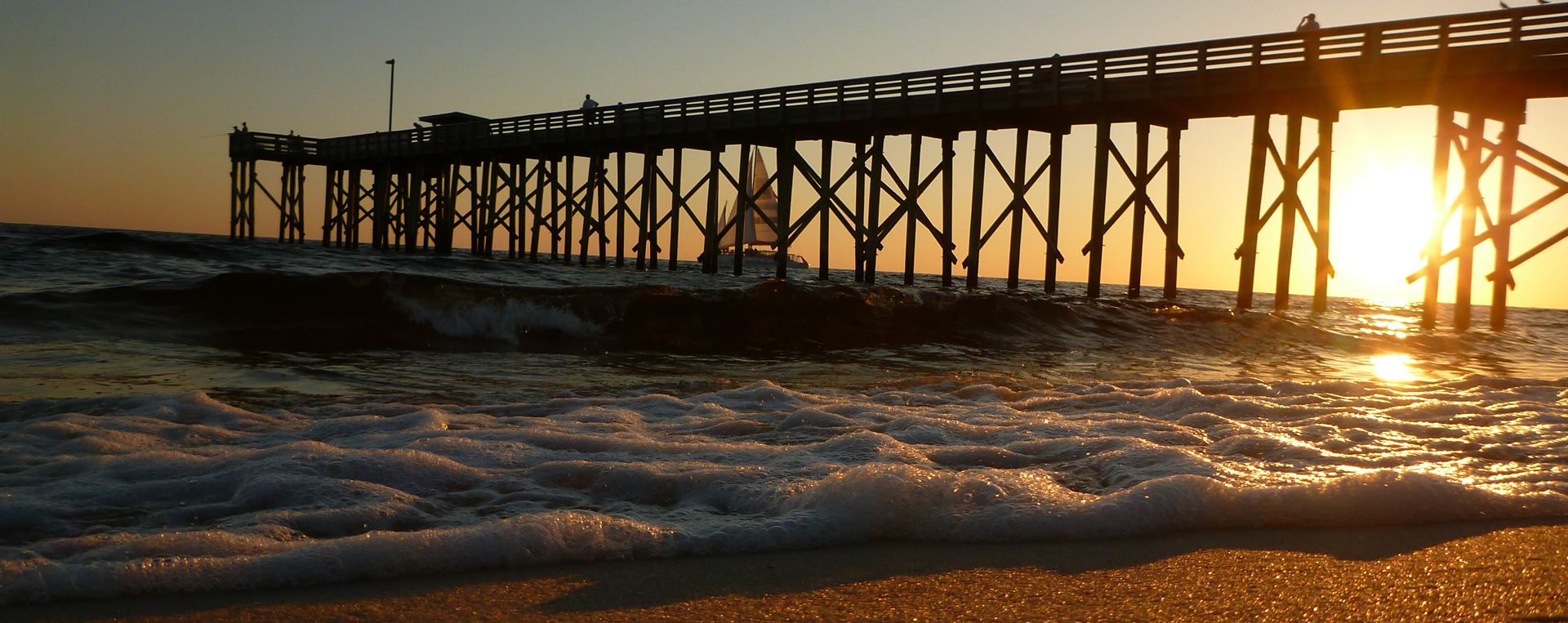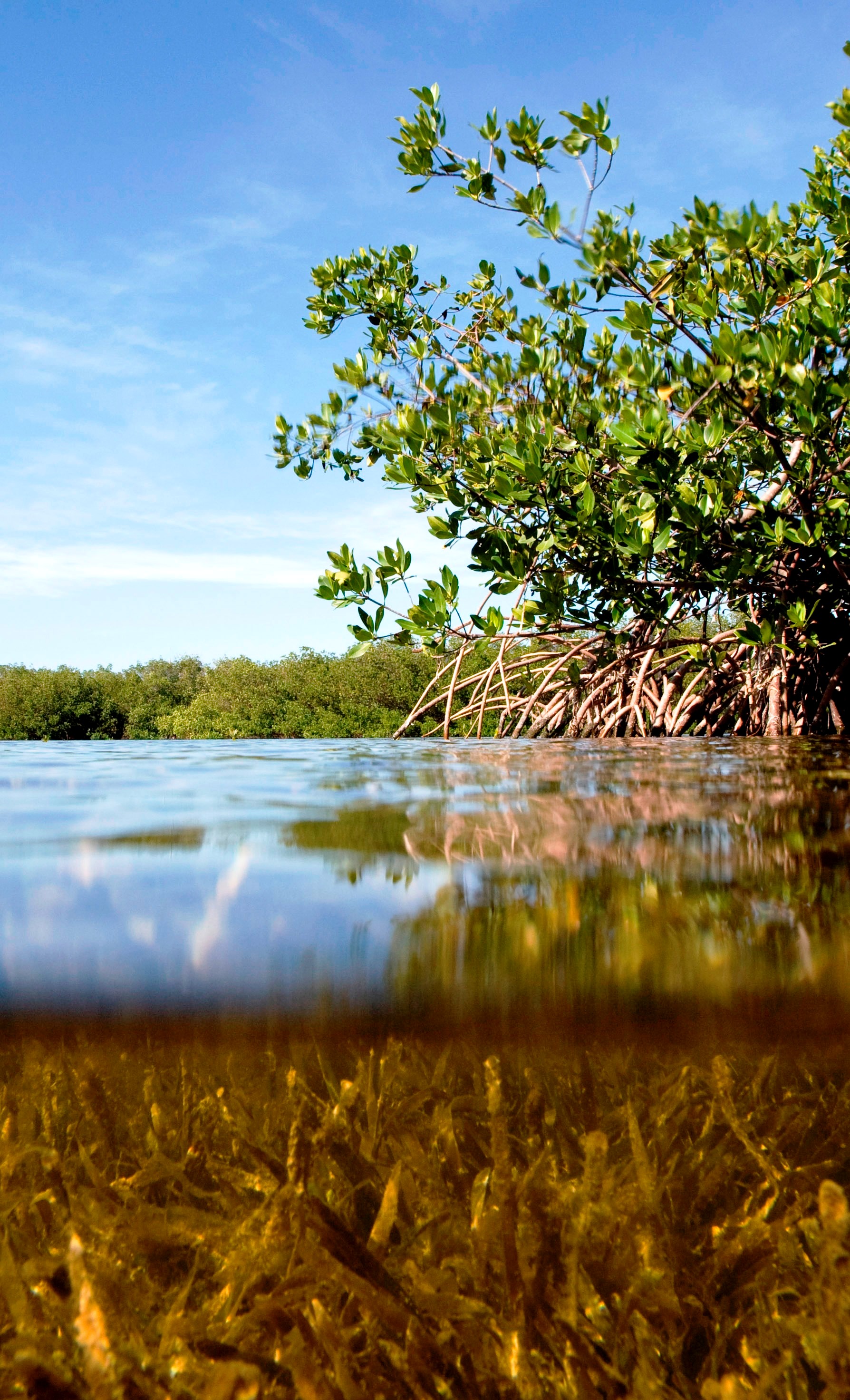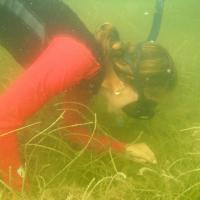

Statewide Ecosystem Assessment of Coastal and Aquatic Resources (SEACAR)
- Home
- Divisions
- Office of Resilience and Coastal Protection
- Florida Coastal Management Program
- Statewide Ecosystem Assessment of Coastal and Aquatic Resources (SEACAR)
FCMP Quick links
- Florida Coastal Management Program
- About Us
- Beach Access and Safety Program
- Beach Safety Flag and Sign Request Information
- Coastal Partnership Initiative Projects Map
- Coastal Zone Enhancement Program (CZMA Section 309)
- Contacts
- Federal Consistency
- Florida Coastal Access Guide
- Florida Coastal Management Program Guide
- Florida Marine Debris Planning
- Grants
- Laws & Regulations
- Program Activities
- Public Notices
- Statewide Ecosystem Assessment of Coastal and Aquatic Resources
- All FCMP content
Using current knowledge of coastal processes and scientific data to better understand the statuses and trends of Florida’s coastal aquatic resources.

Florida’s natural coastal and aquatic systems provide a host of economic and ecological benefits and are vital to the integrity of Florida's economy and environment. However, prior to the 2010 Deepwater Horizon Oil Spill, which heavily affected numerous coastal and aquatic systems, the state of Florida lacked a cohesive and expansive database assessing the health of these systems. Therefore, the Statewide Ecosystem Assessment of Coastal and Aquatic Resources (SEACAR) was formed to enhance existing coastal and aquatic management efforts and address identified management needs.
SEACAR is a collaborative process that seeks to identify through the consensus of experts the environmental factors, or indicators, that best predict the status and trends of vulnerable ecosystems in across Florida. For example, the percentage of the seafloor covered by seagrasses is an indicator of the stability and condition of aquatic plant life over time while nutrient levels in the water column help predict the risk of harmful algal blooms. Many such indicators are analyzed by the SEACAR team to complete the picture for each of five habitat types: submerged aquatic vegetation, the water column, coral reefs, oyster reefs, and coastal wetlands.
Supported by scientific data from more than 150 research studies and inventory and monitoring programs around the state, SEACAR provides status and trends reporting through web-based access to data and assessments. These products are found on the SEACAR Data Discovery site, a public, user-friendly database with links to a wealth of critical environmental data. The database offers standardized data for submerged and coastal habitats, with a mapping feature for visualizing and overlaying monitoring sites.
Through collaboration and careful data management, SEACAR’s Data Discovery site is a go-to source for both historical and current trends in Florida’s treasured coastal and aquatic resources.
SEACAR Teams
Scientist, managers, planners and policymakers from more than 70 organizations have collaborated to bring forth scientific and technical expertise for management, planning and restoration efforts.
There are three main teams that play a significant role in guiding SEACAR. These teams include the DEP Steering Team, Resource Assessment Data Team and Resource Assessment Partner Team. Agendas and meeting minutes from previous team meetings can be found here.
DEP Steering Team
Resource Assessment Data Team
Agencies, land managers, NGOs and universities: Provide scientific knowledge and expertise to identify data and information needs, recommend indicators, and identify protocols, methods and measures that can be synthesized for analysis. Subject Matter Expert Teams, a subset of the Resource Assessment Data Team, are tasked with reviewing program data, and recommending spatial and temporal scale for analysis.
Resource Assessment Partner Team
Natural Resource Managers, Planners and Elected Officials: Provide management and policy perspective for indicator identification and final assessment product formats.
What We Do
The strength of Florida’s economy relies on the continued health of its natural coastal and ocean habitats. Chief among these habitats is submerged aquatic vegetation (seagrasses and benthic macroalgae), water column, coral reefs, oyster reefs, and coastal wetlands (salt marshes and mangrove swamps). Ecosystem services provided by these habitats include but are not limited to serving as protection against storm surge, providing habitat for thousands of species, providing jobs in tourism, recreation, and industry, and contributing to water quality and clarity through natural filtration and absorption processes.
Habitats and Indicators
The Resource Assessment Data and Partner Teams reviewed available resources and representative long-term data to identify key indicators for analysis within each of the five priority submerged habitats. An inventory of current knowledge and long-term ecological monitoring programs was used to develop indicators for the assessment. Indicators were evaluated based on scientific value and their ability to be integrated into management and policy decisions. Criteria for establishing indicators included:
- Show statewide and site-specific trends over time.
- Allow comparisons between sites and across the state.
- Illustrate habitat change over time driven by biotic and abiotic factors that define community structure.
- Allow data/results to directly inform and/or be used in local and state natural resource management decisions, submerged land planning and/or restoration.
- Allow for site and/or regional specific environments and conditions while being comparable statewide.
Submerged Aquatic Vegetation (SAV)a
- Percent Cover (by species)1
- Acreage2
- Water Clarity3
Water Columnb
- Nutrients
- Water Quality4
- Water Clarity3
- Nekton5
Coral Reef
- Community Composition6
- Grazers and Reef-dependent Species
- Percent Cover
Oyster Reef
- Density
- Acreage2
- Percent Live
- Size Class
Coastal Wetlands (Salt Marsh to Mangrove)
- Acreage (by habitat)2
- Species Composition
SEACAR brings in data for these habitats and indicators from numerous data providers across the state. To accommodate the sheer volume of data, the SEACAR Data Discovery site was formed.
SEACAR Data Discovery Site
The SEACAR Data Discovery site serves as the foundation of SEACAR’s products. It is user-friendly, uniform, and includes data for all five habitats in one database. Environmental data in the database is linked to spatial data, contributing program information, protocols and logos.
Data providers upload their data annually at a minimum using a drag and drop system in the Data Discovery Interface (DDI), a password-protected system for the administration of data discovery and a data collection interface. The SEACAR team and the University of South Florida Water Institute (USF) export the data on a quarterly basis for standardization and quality assurance/quality control processing, thus allowing integration of data from all programs that are fundamentally the same to facilitate meta-analyses of habitat status and trends. The data is then made publicly accessible on the database.
How to Use the SEACAR Data Discovery Site
The “Monitoring Programs” tab and the “Program Matrix” tab can be filtered by habitat, region, indicator and/or managed area to narrow the breadth of the resulting programs. Program pages contain standardized environmental data for export, spatial data (map of program area), contributing program information, protocols, and logos. The “Maps” tab contains four maps that may be interacted with by clicking on and off layers to view different habitat areas or indicator areas.
Where is Data Collected?

The Florida Department of Environmental Protection’s (DEP) Office of Resilience and Coastal Protection (RCP) manages a statewide network of marine protected areas encompassing over five million acres of the state’s most pristine and diverse marine, coastal, and aquatic habitats.
The statewide network of estuarine and marine aquatic preserves (APs), three national estuarine research reserves (NERRs), the Florida Keys National Marine Sanctuary (FKNMS), and Florida’s Coral Reef Conservation Program (CRCP) are managed to preserve and protect the scientific, economic, aesthetic, and recreational values associated with the state’s submerged resources for the benefit of future generations.
Data collected from within this network by numerous entities constitute the SEACAR Data Discovery site and Data Discovery Interface (DDI).
Supporting Projects
Enhancing SEACAR’s Impact: A Comprehensive Stakeholder Engagement and Science Communication Initiative for Coastal Resilience in Florida
This comprehensive stakeholder engagement and science communication initiative provides a unique and innovative approach to increasing outreach by bridging the gap between the scientific community and the public through individualized educational opportunities catered for each stakeholder group. At the end of this project, scientists will have an increased understanding of SEACAR Data Discovery site utilization, comparable methodologies among monitoring programs, and communication skills for catering their messages to a variety of audiences. Public participants will walk away with a greater understanding of and appreciation for Florida’s coastal, marine and estuarine resources. Teachers and students will have access to hands-on educational activities connecting data to regional ecology and cultivating skills to communicate science in a compelling way.
The efforts of this project will be used to make management decisions backed by sound science. Together, these skillsets developed, and knowledge gained will aid the state of Florida in continued efforts to conserve and restore our ocean and wetland resources, thus increasing resiliency of these valuable ecosystems in the coming years.
Educational opportunities:
- Science communication training, DATES: June 2 – 6, July 7 – 11, and August 4 – 8, 2025. [Register]
- Webinar series and data workshops, * DATES: TBD
- Public seminar hosted at Mote Marine Laboratory and Aquarium, *DATES: December 3 – 4, 2025.
- Traveling trunks, *in development!
*Details and registration links will be posted when available.
For additional information please visit: Enhancing SEACAR's Impact
Florida Coastal Water Quality Assessment and Integration Project
The Florida Coastal Water Quality Assessment and Integration Project developed a statewide data collection and dissemination framework for Florida's statewide aquatic preserve (AP) system, making it consistent, and therefore comparable, with the National Estuarine Research Reserves (NERR) nationwide system. The project evaluated historical estuarine water quality data from 28 monitoring stations managed by aquatic preserve offices around the state. These AP offices have been collecting near continuous (15-minute) water quality data since 2004.
This project has assessed over 7.9 million water quality data records which are now available through a publicly accessible web-based application (FloridaAPdata.org) and the Florida Coastal Water Quality Assessment and Integration Report, where they can be used for management planning, restoration activities, and support of continued federal consistency through the regulatory process. This data has been incorporated into SEACAR to assess status and trends of coastal resources and to support state and local programs, planning and decision-making. For the efforts on this project, the prestigious “OneDEP: Living Our Values” Award was granted.
Special thanks to our partners who provided letters of collaboration for this project:
- Centralized Data Management Office
- Coastal and Heartland National Estuary Program
- Gulf of America Alliance
- Ocean Conservancy
- Sanibel-Captiva Conservation Foundation
- Tampa Bay Estuary Program
AP continuous water quality data will be incorporated into SEACAR to assess statuses and trends of coastal resources, to support state and local programs, planning and decision-making.
Historical Oyster Body Size Project
The Historical Oyster Body Size (HOBS) Project is an ongoing effort to increase the available historical data on oyster body size in Florida using samples of buried, dead oyster shells collected from 11 areas around the state. The data and all findings from the project are being integrated with the oyster habitat statuses and trends analyses for SEACAR, as well as products such as the Data Discovery site and reports. The project grew out of a recognition that, although oyster body size is currently recognized as an important indicator of oyster population condition, many oyster monitoring programs in Florida did not start collecting oyster body size data until the past decade or two, making long-term historical records for this indicator uncommon. These dead, buried oyster shells are the remains of oysters that lived on the reef decades to centuries in the past and now form the internal matrix of living oyster reefs. This buried record of dead shells can offer a window into the range of body sizes present on the reef in the past, even in locations where no historical monitoring records exist.
To build body-size baselines from the dead oyster shells, Office of Resilience and Coastal Protection scientists and partners from the Paleontological Research Institution (PRI) collected core samples from more than 30 oyster reefs around the state, including two depth intervals — representing two different time periods — for each core. These samples were processed and all complete oyster left valves larger than 20 mm in shell height were measured (over 20,000 shells in total). Each measured shell was assigned a number and all samples were curated and deposited into the research collection at the PRI where they are available for further study.
A subset of the measured oyster shells from each reef were sent out for age-dating using radiocarbon analysis to better understand the time period represented by the body size baselines.
HOBS Publications
- Stephen R. Durham, Gregory P. Dietl, Quan Hua, John C. Handley, Darrell Kaufman, Cheryl P. Clark; Age variability and decadal time-averaging in oyster reef death assemblages. Geology 2023; 51 (11): 1067-1071.
- Gregory P. Dietl, Stephen R. Durham, Cheryl P. Clark, Rebecca Prado; Better together: Building an engaged conservation paleobiology science for the future. Ecological Solutions and Evidence 2023, 4, e12246.
Funding
- Florida Coastal Management Program Final Assessment and Strategies FY 2016-20
- Florida Coastal Management Program Final Assessment and Strategies FY 2021-25
SEACAR, the Florida Coastal Water Quality Assessment and Integration Project, and the Historical Oyster Body Size Project are funded, in part, through a grant agreement from the Florida Department of Environmental Protection, Florida Coastal Management Program, by a grant provided by the Office for Coastal Management under the Coastal Zone Management Act of 1972, as amended, National Oceanic and Atmospheric Administration (NOAA). The views, statements, findings, conclusions and recommendations expressed herein are those of the author(s) and do not necessarily reflect the views of the State of Florida, NOAA, or any of their subagencies.
Contact
Interested in subscribing to DEP newsletters or receiving DEP updates through email?
Sign UpAbout DEP
The Florida Department of Environmental Protection is the state’s lead agency for environmental management and stewardship – protecting our air, water and land. The vision of the Florida Department of Environmental Protection is to create strong community partnerships, safeguard Florida’s natural resources and enhance its ecosystems.
Learn MoreContact
3900 Commonwealth BoulevardTallahassee, Florida 32399-3000 Public.Services@FloridaDEP.gov 850-245-2118
